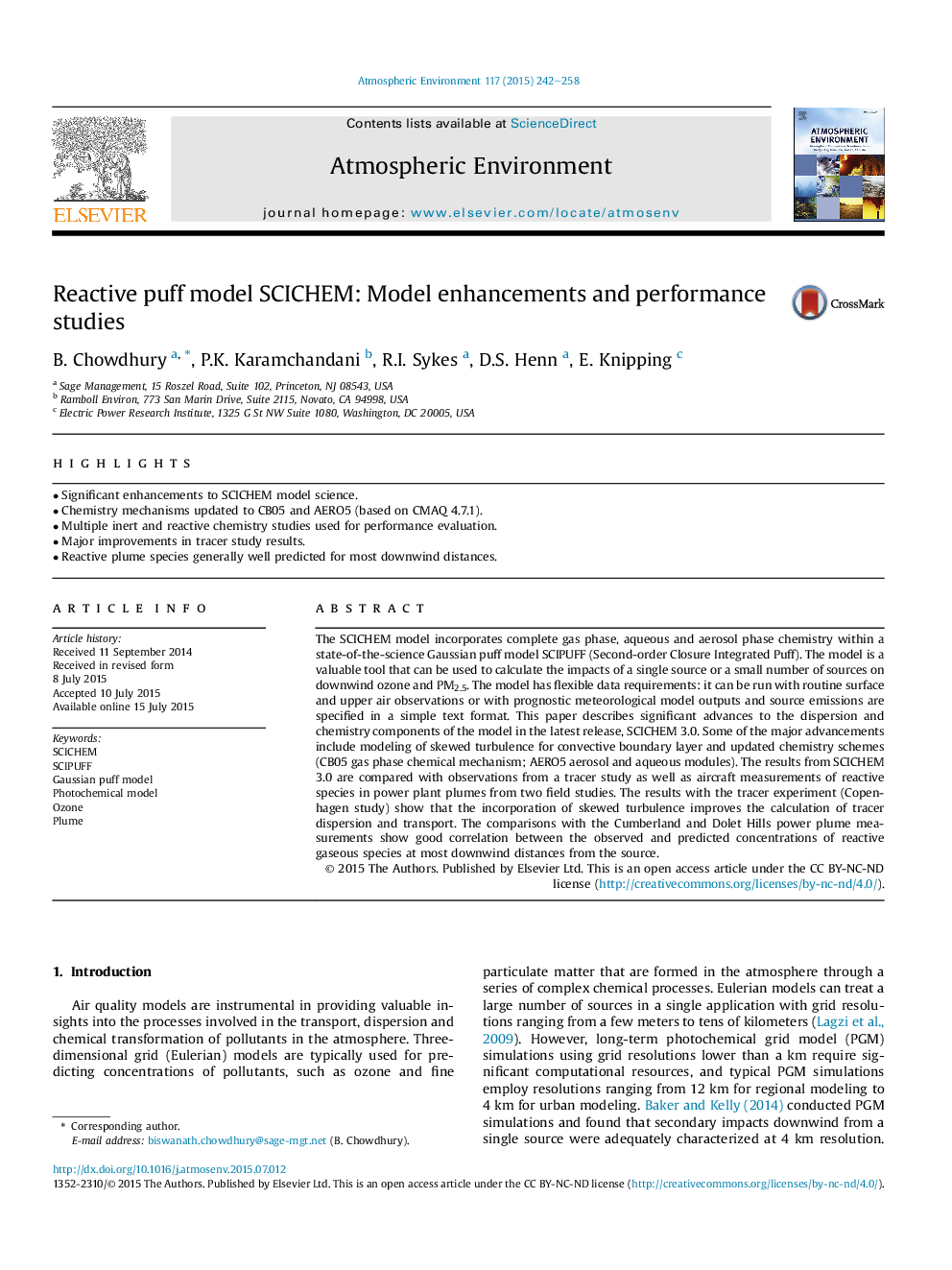| Article ID | Journal | Published Year | Pages | File Type |
|---|---|---|---|---|
| 6337752 | Atmospheric Environment | 2015 | 17 Pages |
Abstract
The SCICHEM model incorporates complete gas phase, aqueous and aerosol phase chemistry within a state-of-the-science Gaussian puff model SCIPUFF (Second-order Closure Integrated Puff). The model is a valuable tool that can be used to calculate the impacts of a single source or a small number of sources on downwind ozone and PM2.5. The model has flexible data requirements: it can be run with routine surface and upper air observations or with prognostic meteorological model outputs and source emissions are specified in a simple text format. This paper describes significant advances to the dispersion and chemistry components of the model in the latest release, SCICHEM 3.0. Some of the major advancements include modeling of skewed turbulence for convective boundary layer and updated chemistry schemes (CB05 gas phase chemical mechanism; AERO5 aerosol and aqueous modules). The results from SCICHEM 3.0 are compared with observations from a tracer study as well as aircraft measurements of reactive species in power plant plumes from two field studies. The results with the tracer experiment (Copenhagen study) show that the incorporation of skewed turbulence improves the calculation of tracer dispersion and transport. The comparisons with the Cumberland and Dolet Hills power plume measurements show good correlation between the observed and predicted concentrations of reactive gaseous species at most downwind distances from the source.
Related Topics
Physical Sciences and Engineering
Earth and Planetary Sciences
Atmospheric Science
Authors
B. Chowdhury, P.K. Karamchandani, R.I. Sykes, D.S. Henn, E. Knipping,
